How can I imitate Diane's fertilizing regime?
bart bart
4 months ago
Featured Answer
Sort by:Oldest
Comments (27)
Related Discussions
Springtime Regime
Comments (7)Hi laurieoh, How big is your pond? How big is your fish load? I can only speak from my experience. I have a small - roughly 5'x5'x3' deep pond with 8-10 4" to 7" goldies/comets (and some babies later on). Algae loves sunlight and fertilizer (fish poop), and until my plants take off in the spring I get an abundance of string algae which I clean out by twirling a toilet brush in it and removing by hand. Suspended algae (green pea water) usually hits me for about 1-2 weeks each spring, several weeks after starting up the falls and filter, as the water warms up but again before the plants are thriving. I don't have a UV light but many people use them to help with this. I use quilt batting or screen around my pump and change it as frequently as necessary - about twice a week for 2 weeks, then once a week for 2 weeks, then I usually don't need to do it more than once a month. The quilt batting traps an amazing amount of suspended junk. The bacteria in your filters needs warm weather to grow and help filter the water. Once my pond is up and running I rarely do water changes, just top it off when the water level goes down. Maybe 3 times over the summer a 10% - 20% water change. Drastic water changes and/or cleaning just starts the cycle over. I also have never had any luck with adding chemicals or other algacides. Not saying they don't work, just not for me. Most ponds need ~ 75% surface covered by plants, good filtration, and a low fish load to have clear water. Right now I can count the pebbles tipped out of the lily pots on the bottom of mine, but I know I will have some green water for a week or 2 this spring as my veggie filters cycle up to do their jobs. So, PATIENCE. If you have a big pond maybe a UV filter? Don't drain it and scrub. Lots of surface plants - you can always thin them ruthlessly to see your fish after the water clears. Just my 2 cents. Good luck!...See MoreSpray regime for tomatoes
Comments (7)By Carolyn J. Male It's midsummer in the tomato patch. You go out to admire your green and healthy plants, and what do you see but curling brown or yellow leaves, black or gray spots, or other blemishes. It's not a pretty sight, but many home gardeners face it every summer. Plants slowly lose their leaves, reducing fruit yield, and will very likely die. To make energy to fuel plant and fruit growth -- and to produce all those wonderful flavor components that make homegrown tomatoes so irresistible -- the plants need leaves. So, if the leaves show signs of a disease, you need to diagnose it in hopes of preventing it from spreading. The most common maladies of tomatoes can be classed as systemic or foliar. This article focuses on foliar diseases, but because both foliar and systemic diseases can affect the leaves, you need to know how the two kinds differ from each other. Tomato Diseases: Systemic or Foliar? Systemic diseases affect the entire plant and occur only in certain areas of the country. The best-known ones are verticillium wilt, fusarium wilt, root knot nematode disease, and tobacco mosaic virus; tomatoes with resistance to these carry a letter (V, F, N, T) after the variety name. In contrast to systemic diseases, most foliar diseases affect primarily the leaves. They are also much more widespread than systemic diseases, and most tomato varieties have little resistance to them. Wilting and yellowing of the leaves in a particular characteristic pattern usually indicate a systemic disease that often kills the plant fairly rapidly. However, many gardeners confuse those symptoms with symptoms of foliar diseases. Systemic Diseases. Many tomato growers choose hybrid plants or seeds thinking that, compared to nonhybrids, the plants will be free of all disease. That's incorrect. Rather, first determine if you live in an area where particular systemic diseases are prevalent. Then you'll know whether buying hybrid varieties with such resistances will be worthwhile. You may have seen some or all of the letters VFNT next to the names of hybrid tomato varieties in catalogs and on seed packets. V stands for verticillium wilt; a single gene, called Ve, confers resistance to it. Verticillium most often occurs in northern regions (such as USDA Hardiness Zones 3, 4, and 5) and in humid regions of the South where summer temperatures can get a bit chilly (at high elevations, for example). F stands for fusarium wilt, which comprises three races: F1, F2, and F3. Three different genes control resistance. F1 and F2 are found primarily in the southern part of the United States, and F3 is found primarily in California and Florida. Randy Gardner, professor of horticultural sciences and a hybridizer at the University of North Carolina, has seen F3 recently in Tennessee, Arkansas, South Carolina, and nearby areas. N denotes root knot nematode disease resistance, and one gene confers resistance to three of the most common disease-causing nematodes. However, Mark Barineau, senior plant breeder with Seminis Seeds in Felda, Florida, notes that some nematode strains can overcome this resistance. If you live in California or Florida, or another state bordering the Gulf Coast, and especially if you're in an area that has the sandy soils that nematodes love, your plants are at risk. T stands for tobacco mosaic virus, which is seldom a problem for home gardeners. The disease mainly afflicts plants in commercial greenhouses. Testing and Labeling. If a plant label or seed packet does not include VFNT next to the variety's name, does that mean that the variety is susceptible to those diseases? Not at all. It simply means that it was not tested for resistance in a laboratory or in the field. Tomato varieties created at large companies, such as Seminis Seeds, are tested in company labs. Likewise, varieties created by university-based hybridizers are tested in university labs. Testing for each disease costs about $200 per tomato variety. Thus the main reason catalogs and seed packets don't list many hybrids and open-pollinated varieties, including the popular heirloom types, as having particular resistances is because they were never tested. (Heirloom varieties are truly orphans and have no one to provide the money for testing.) Yet many open-pollinated and hybrid varieties that have no listed disease resistances do have good resistance to certain pathogens. Foliar Diseases. These diseases mainly infect the leaves, not the entire plant. Some also affect the fruit. Although foliar diseases are the most common tomato diseases, few varieties on the market have resistance to or tolerance of foliar disease. Most foliar diseases cause progressive defoliation of the plant rather than quick death; the major exception is late blight. Remember, more than one disease can infect the same plant. Do open-pollinated tomatoes have natural resistance to foliar diseases? Most certainly. Tomato aficionados -- I'm one, growing 100 to 200 varieties each summer -- have long observed that potato-leaved varieties (leaves that have no indentations on the borders), such as 'Aunt Ginny's Purple', and rugose-leaved varieties (with a puckered leaf surface), such as the Husky series, often show remarkable tolerance to foliar diseases. No doubt as more home gardeners grow more varieties year after year, they will be better able to evaluate the tolerance to foliar disease claimed by growers who test-grow hundreds of varieties year after year. Tolerance may be due to the fact that the epidermis of the leaf in these potato- and rugose-leaved varieties is thicker than that of regular leaf varieties. Some hybridizers are taking a closer look at the potato-leaved varieties, but gardeners might be reluctant to grow plants with such unfamiliar foliage. Richard Robinson, professor of horticultural sciences at Cornell University's experimental station in Geneva, New York, notes that this was true in the late 1940s and early 1950s, when Cornell released some potato-leaved varieties. With the current interest in heirlooms, potato-leaved varieties would surely be more accepted today. The rugose-leaved foliage of the Husky series has been very well received, according to Jim Waltrip, director of the garden division of Seminis Seeds. The deep green, puckered foliage is seen as representing a very healthy plant. In my view, both kinds of foliage are more tolerant of many foliar diseases, and both are beautiful to look at. How to Prevent Foliar Diseases Two years ago I surveyed common foliar diseases found around the country, and I've selected six of those to discuss in more detail below. Here are ways to prevent them. 1. Plant in a good location. Foliar diseases develop most quickly when the leaves remain wet. However, some diseases grow best in cool, wet environments and others in warm, wet conditions. Thus it's important to think ahead when locating and spacing your tomato plants. Ideally the plants should receive morning sun to evaporate the dew. Spacing too closely hinders air circulation and encourages development of foliar diseases. Space caged and staked tomatoes at least 2 feet apart, and set plants that are allowed to sprawl at least 3 feet apart. Many diseases can remain in the soil for several years, so standard practice dictates that you rotate your planting every three years. With limited space, that may not be necessary: I've been growing 600 to 800 plants in the same place for 15 years, and I haven't had any disease buildup at all. My plant debris is plowed under deeply (at least 8 inches to 1 foot) in the fall. I sow a cover crop of annual rye in the fall, which is then plowed under deeply in the spring. 2. Prevent Transmission. Transmission of foliar disease agents is primarily airborne, but soils can also be contaminated. A mulch helps prevent fungal spores in the soil from splashing up on the foliage following rain or irrigation. At the first sign of problems, pick off and destroy infected, yellow leaves. Some foliar diseases can be seedborne, but most commercial seed is treated (by fermentation and/or other means) to reduce the incidence of seedborne pathogens. 3. Don't Overfertilize. Tomatoes are not heavy feeders, so fertilize them sparingly with 5-10-10 or an organic equivalent. Apply fertilizer three to four weeks after transplanting and again just before fruits start forming. I find that at least one foliar fertilization with fish emulsion or seaweed is helpful; spray it some time after the first application of 5-10-10. Excess nitrogen can cause too-rapid growth, which encourages foliar diseases. It can also inhibit blossom formation and pollination, encourage blossom-end rot, and delay ripening. 4. Spray A vigorous spray program can help prevent fungal diseases. Many growers find that chlorothalonil (Daconil) works well, and organic growers might try copper-based sprays. Late blight is a special problem. If you live where late blight is common, ask a cooperative extension agent for advice. Otherwise, use any fungicide with chlorothalonil in it for late blight. Sprays to control bacterial diseases are not available. To minimize them, follow the cultural recommendations that ensure good air circulation. So plan your garden site in advance, space plants appropriately, use treated seed, fertilize lightly, spray if you wish, and consider trying some potato-leaved varieties. You might also invoke the protection of the tomato gods and goddesses. Who knows? It might just work. Foliar Diseases of Tomatoes When things go wrong with tomatoes, the cause may be environmental stress of some kind or a fungal, viral, or bacterial pathogen. Some of the problems caused by such pathogens are systemic, meaning they affect all plant parts, including the roots. The six common foliar diseases shown here affect primarily leaves and sometimes the fruits and stems. Bacterial spot ( Xanthomonas vesicatoria ) * Symptoms: Small dark black-brown spots on leaves and stems usually have darker borders. The centers of the spots may dry and crack. If this is the only disease infecting the plant, leaves may not yellow and drop. All aboveground parts of the plant are susceptible, including flowers. Infected flowers will likely not set fruit. * Description: Both peppers and tomatoes are susceptible to this pathogen, which is found in many parts of the country. It usually defoliates the plants slowly, so a harvest may be possible. Fungicides cannot control it. Early blight ( Alternaria solani ) * Symptoms: Dark brown, irregular spots appear on lowest, oldest leaves. As spots mature, they develop concentric rings, usually surrounded by a yellowish area. Will infect leaves, stems, and fruits. * Description: This most widespread fungal disease of tomato leaves in the United States is called early blight because it usually infects determinate (bush-type) tomato plants early in the season. On indeterminate plants, symptoms develop as the season progresses. Early blight can also appear late in the season on either type of plant. Plants with early blight slowly lose their leaves, but unless the infection is severe, you can usually harvest mature tomatoes. Bacterial speck ( Pseudomonas syringae ) * Symptoms: Small brown-black spots (smaller than bacterial spot) that are surrounded by a yellow halo. Infects leaves, stems, leaf stems, and flowers. If this is the only disease infecting the plant, leaves may not yellow and fall off. * Description: Because this is a bacterial disease, no preventive sprays are available, and fungicides are not effective. Bacterial speck usually defoliates the plant slowly, so harvesting is usually possible. It is found in many parts of the United States. Gray Leaf Spot ( Stemphylium solani ) * Symptoms: Dark brown spots enlarge, become brown-gray and glazed over, and eventually crack open, allowing the center to fall out. When infection is heaviest, the leaves yellow and fall off. * Description: This fungal pathogen is a particular problem in the humid Southeast, but it also occurs in dry areas where growers use sprinkler irrigation. Commercial farmers have access to resistant varieties, but few such varieties are available to home gardeners. Late Blight ( Phytophthora infestans ) * *Symptoms: Earliest symptom is leaf stems bending downward. This is followed by growth of greasy, gray-green areas on leaves; they turn brown and thin eventually. Leaf undersides may develop a whitish mold. If there is no mold but you suspect late blight, place suspect leaves in a plastic food-storage bag with moist paper towel. Mold will develop within days if it is this disease. Symptoms may develop fast, turning entire plant black and killing it within days. * Description: Late blight has been identified in Florida and California, but the areas most severely affected recently have been the Pacific Northwest, inland regions along the Atlantic Coast, and many areas in the Northeast and Midwest. Despite its name, late blight can appear early or late in the season. Septoria Leaf Spot ( Septoria lycopersici ) * Symptoms: Gray-brown areas (on oldest, lower leaves initially) have gray centers and a darker border. The dark border lacks the rings typical of early blight. The centers of the discolored areas may have many small, black spores, and sometimes a yellowish area surrounds the darkened areas. * Description: Tomato plants in many parts of the United States have this fungal disease, which can appear at any time. It usually slowly defoliates the plants, but a harvest is still possible. Carolyn J. Male is the author of 100 Heirloom Tomatoes for the American Garden (Workman Publishing Co., New York, 1999; $18 )....See MoreHow MUCH citrus fertilizer do I feed my container citruses?
Comments (16)Well, I have to amend the showed in my above Foliage pro label. I assumed that "tsp" is tablespoon (15 ml), but I was wrong, it is teaspoon (5 ml). By the way, it gave very logical values. So ppm N are much lower that those I wrote. The right data are (gotten from here): Maintenance (every watering): 1 part FP in 3000 parts water (1 ml for 3 Lts water) (30 ppm N) Production (weekly): 1 part FP in 1500 parts water (1 ml for 1.5 Lts water) (60 ppm N) to 1 part FP in 750 parts water (1 ml for 0.75 Lts water) (120 ppm N). I am currently astonished, because those ppm N are in my opinion very low for citrus growing. It is commonly assumed that an optimum N ratio for each watering for citrus are between 100 to 150 ppm N. Those recommended for Foliage pro are much lower. I have tested at home the EC of a 100 ppm N of Foliage Pro solution and (with tap water) it is 0.89 dS/m. It is a very safe value, much lower than the maximum recommended for citrus (1.70 dS/m). It would be perfectly possible to water with each watering in a FP/water ratio of 1:1000 (90 ppm N), and even we would be below the recommended N ratio for citrus. So here there is something wrong or I am losing anything....See MoreSpill all your knowledge Diane, aka nanadoll!! Lol
Comments (41)I appreciate the kudos, but the recipes I posted in that linked thread are no longer what I use. Also, "Peters top soil" was really "Scotts top soil" -- I remembered the name wrong. While I did get great growth from that recipe, all those roses were planted in the ground just a few months later. Keeping roses in pots longer required a "fluffier" mix. I came to find that I get more growth from a modified "Mel's Mix" from Square Foot Gardening. My formula for potting up bands now is: 3 gallons peat moss 1 gallon perlite 1 gallon vermiculite 1 gallon Bovung dehydrated manure 3 cups Espoma Garden Tone (or any other similar organic dry fertilizer) This year, I couldn't find Bovung and substituted Black Kow composted manure. But since that has half the N-P-K as Bovung, I doubled the quantity of it, and reduced the peat moss component to 2 gallons. The goal was maintaining a 1/3 inorganic "fluffy yet moisture-retentive" base, made up by the perlite and vermiculite, respectively. This is all mixed in a wheelbarrow. Before adding to a container, I line the bottom with a used coffee filter or two from my Starbucks coffee grounds hauls. This slows the drainage for a while, until the filters break down. And that allows for the containers to stay a bit extra moist in the beginning as the bands grow more roots. I pot the bands in 1- or 2-gal nursery liners, about an inch or two deeper than they were in their original containers. I finish with a 1/2" or so of used coffee grounds, still leaving an inch of space from the rim to allow room for watering and rainfall. The coffee grounds were the most recent addition. If anything, I think they help to keep the earthworms happy -- they always seem to find their way into my pots sitting on the ground. And I happily recommend hitting up your local Starbucks for coffee grounds. While I've been on hiatus from my pickups since I started a different job and have been working a lot, I had a regular system going for quite a while. I bought two heavy duty indoor garbage cans, left one there, and returned the next day to swap them out. I'd dump the cans into a leaky wheelbarrow, which allowed any liquid to drain out. Coffee filters were in there as well, so I started by pulling them out as I found them, reserving them for composting or whatever else I could do with them. The grounds I'd scoop into a bucket, then carry to where I wanted a fresh layer. Even if you go once or twice a week, you'll still get a lot for your garden. Start out spreading it thinly and see what happens as you gradually increase the depth. Or just fling it by the trowel-full into your beds. It's free nutrient-rich organic matter that would otherwise end up in a landfill -- and it already looks rather like soil, so it blends in. :-) ~Christopher P.S. I found some links mentioning my "magic mix". http://forums2.gardenweb.com/discussions/3426379/keep-weak-roses-potted-longer?n=21 http://forums.gardenweb.com/discussions/4005123/salet-is-in-bud http://forums.gardenweb.com/discussions/3533090/bands-doing-great-irish-cream-has-a-bud...See Morebart bart
3 months agolast modified: 3 months agobart bart
3 months agobart bart
3 months agobart bart
3 months agoMelissa Northern Italy zone 8
3 months agolast modified: 3 months agobart bart thanked Melissa Northern Italy zone 8bart bart
3 months agobart bart
3 months agobart bart
3 months ago
Related Stories

HOUSEPLANTS8 Houseplants You Can't Kill
They're forgiving and let you forget. Houseplants don't get any easier than this
Full Story
PETS5 Finishes Pets and Kids Can’t Destroy — and 5 to Avoid
Save your sanity and your decorating budget by choosing materials and surfaces that can stand up to abuse
Full Story
DECORATING GUIDESThe Dumbest Decorating Decisions I’ve Ever Made
Caution: Do not try these at home
Full Story
KITCHEN DESIGNNew This Week: How Dark Can Your Kitchen Go?
These 3 kitchens wow with dark cabinetry and drama
Full Story
SPRING GARDENINGHow to Grow a Rose Garden in Pots
Everything can come up roses, even without a plot of soil in sight. This step-by-step guide to growing roses in containers shows you how
Full Story
PLANTING IDEASGreat Garden Combo: Rose + Clematis for Small-Space Impact
We all need somebody to lean on. And when a rose supports a climbing vine, the results can totally transform a small garden
Full Story
FARM YOUR YARDHow to Build a Raised Bed for Your Veggies and Plants
Whether you’re farming your parking strip or beautifying your backyard, a planting box you make yourself can come in mighty handy
Full Story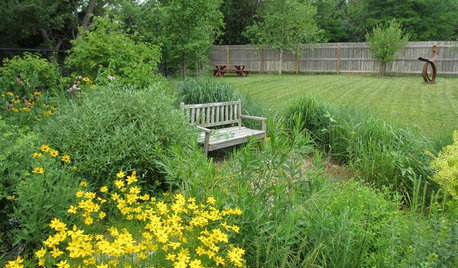
GARDENING GUIDESHow to Design a Garden That Lasts
Climates are changing. Wildlife is evolving. Can your garden keep up?
Full Story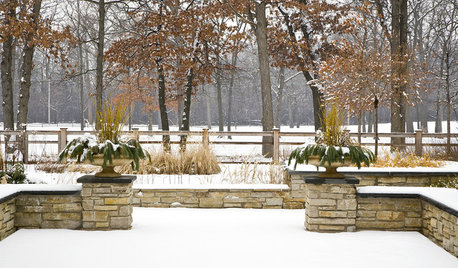
LAUNDRY ROOMSFreeze-Dried Clothes? Houzzers Share Their Winter Laundry Tales
Air-drying the wash in chilly temps can be a challenge, but Houzz readers find a way
Full Story
ROOM OF THE DAYRoom of the Day: Miami Beach Style for a Virginia Teen Hangout
Don’t let the glam look fool you — this spare room for high schoolers and their friends can be cleaned and neatened in a snap
Full Story



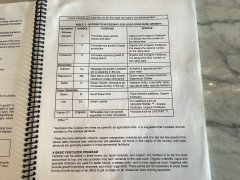

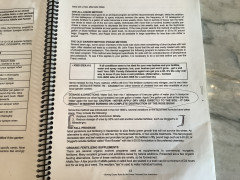



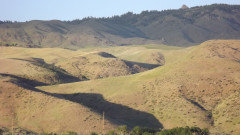
roseseek